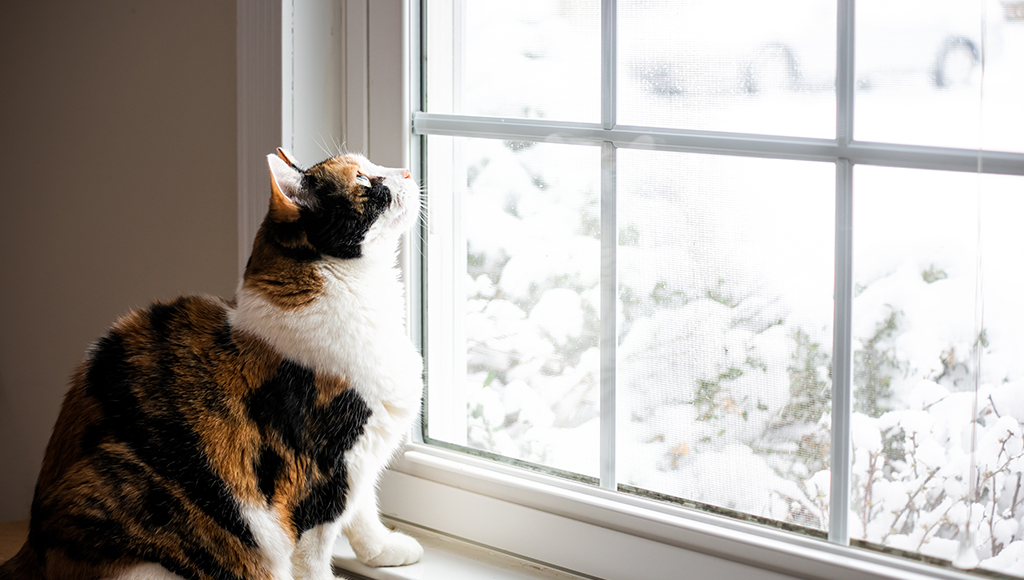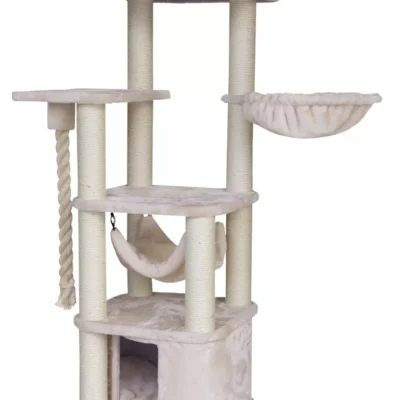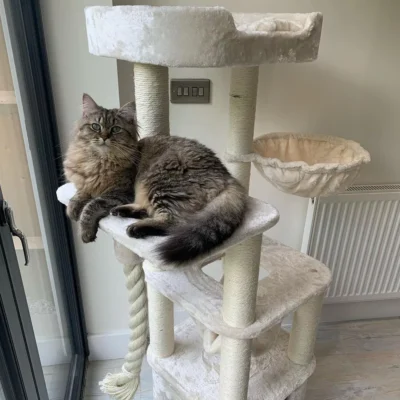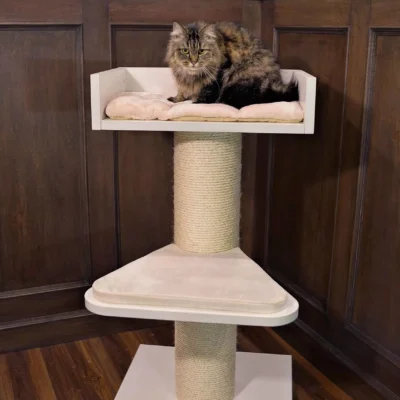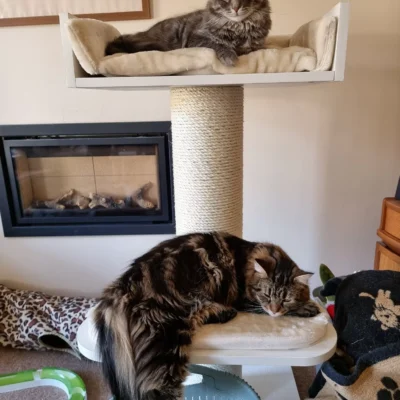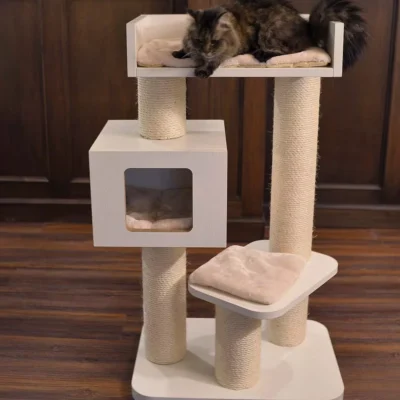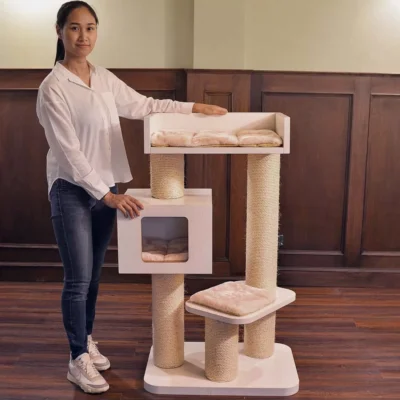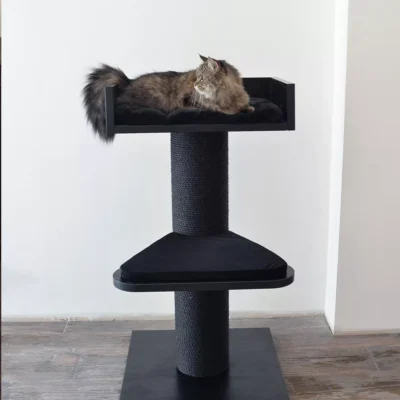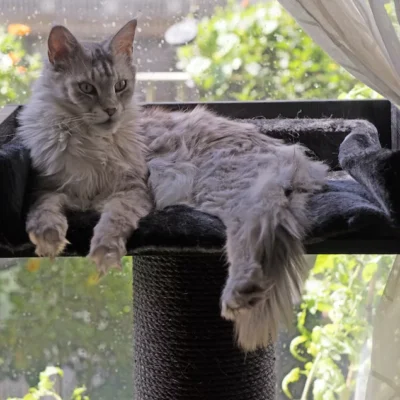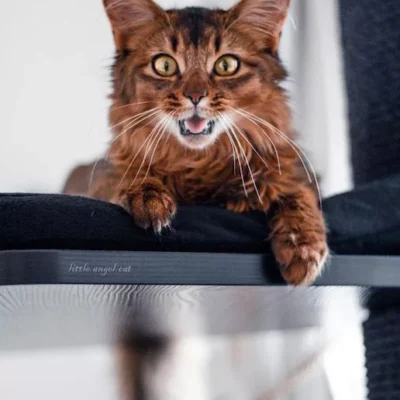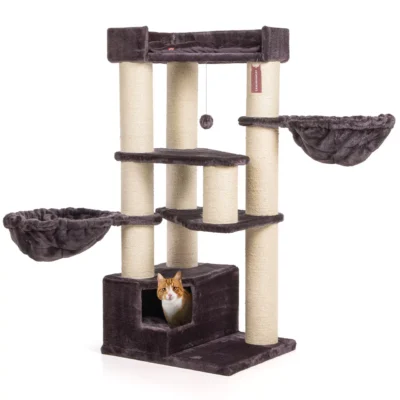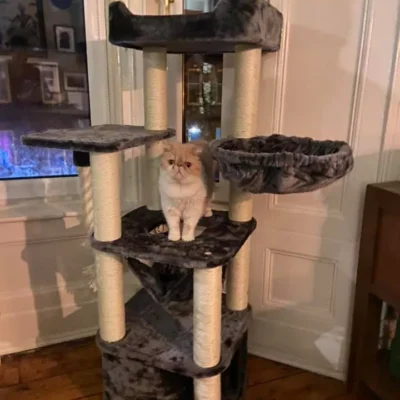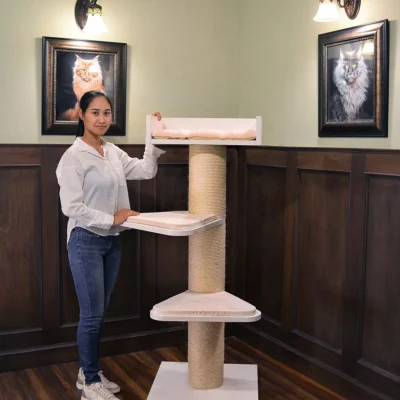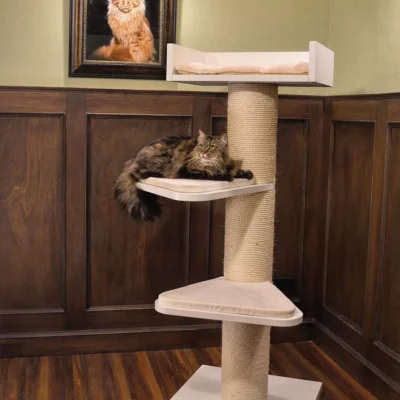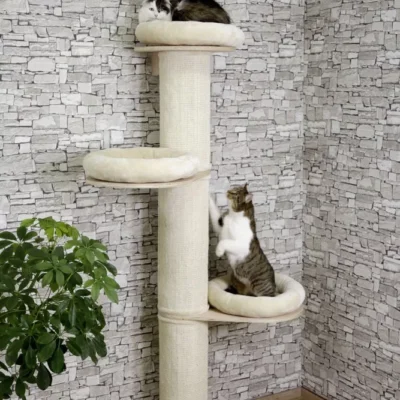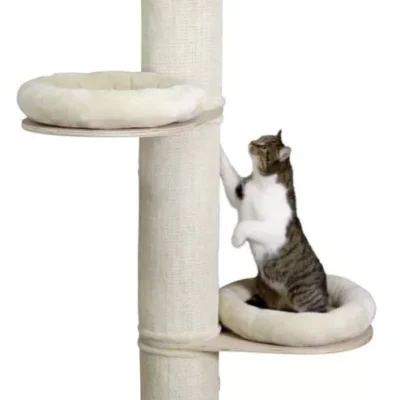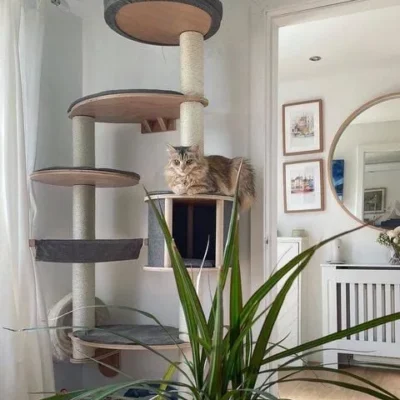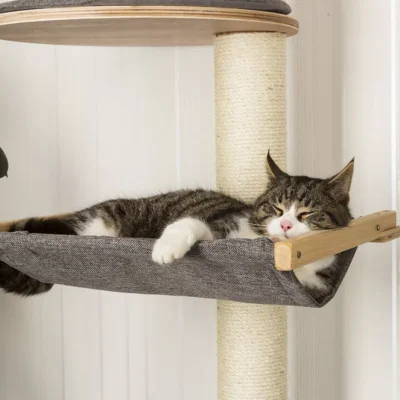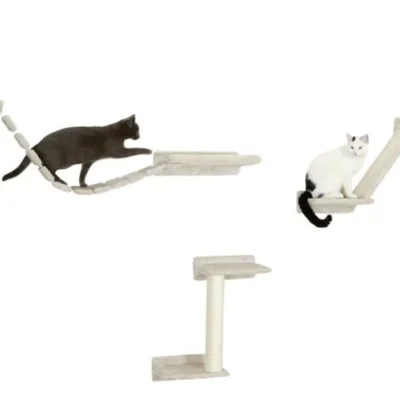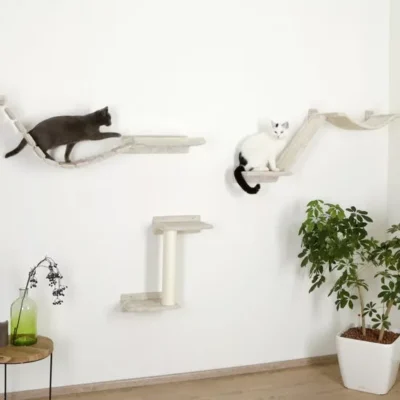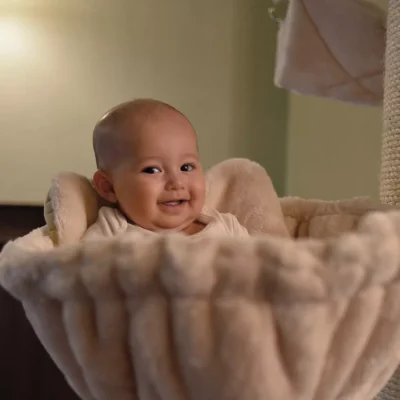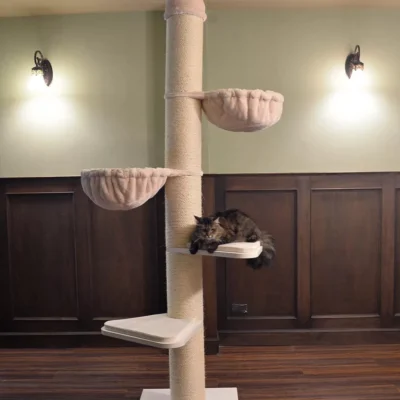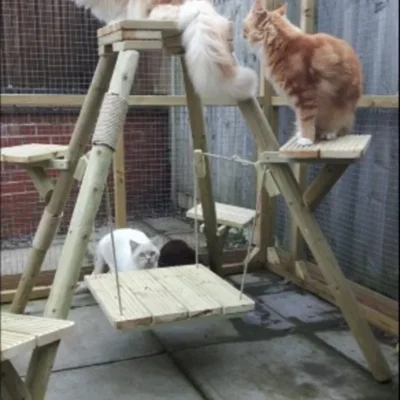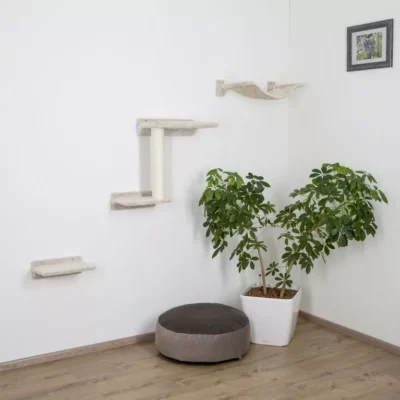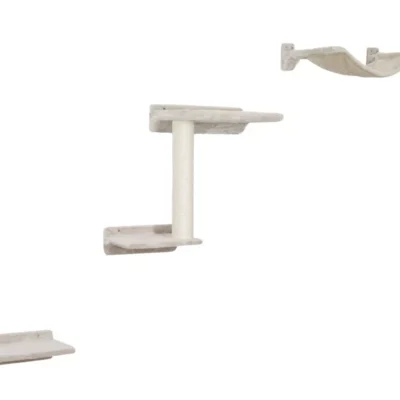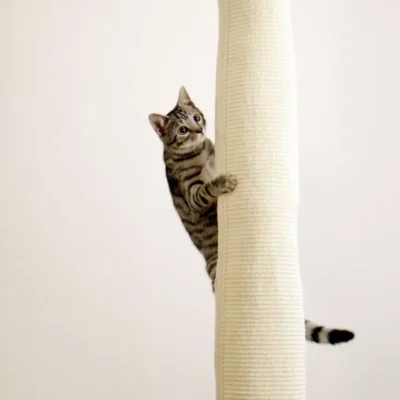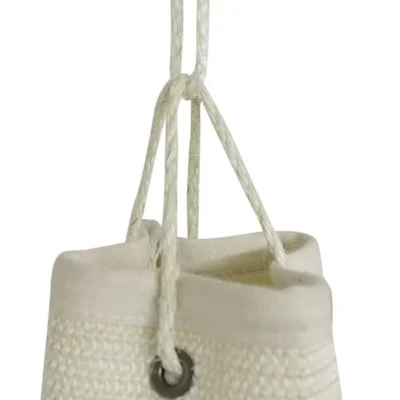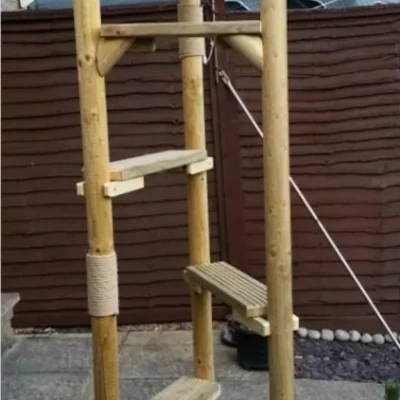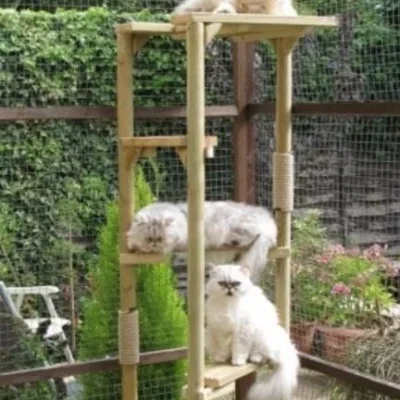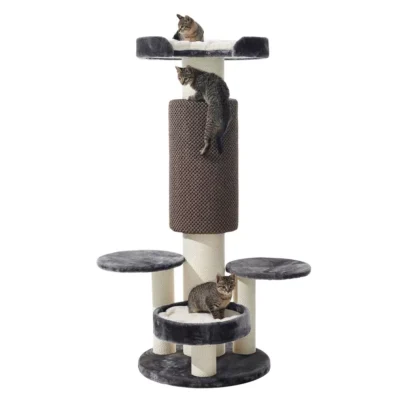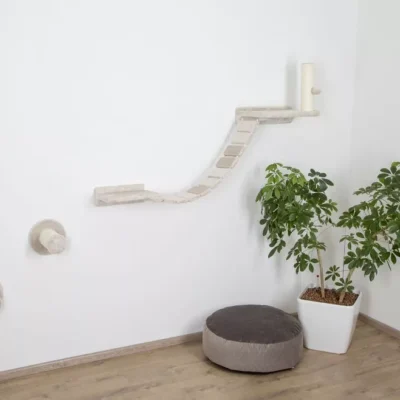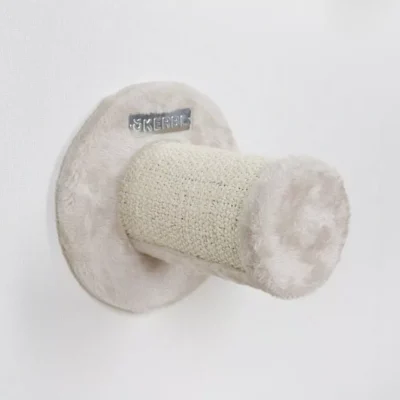0
The changing seasons bring not only a shift in weather but also a subtle transformation in the moods of our feline companions. Just as humans can be affected by Seasonal Affective Disorder (SAD) during darker and colder months, our beloved cats may also experience variations in their well-being in response to changing weather conditions.
SAD in cats is closely intertwined with the seasonal fluctuations in natural light, temperature, and outdoor activities. As days grow shorter and sunlight diminishes, our cats, like us, can exhibit changes in their behavior, energy levels, and overall disposition. The lack of outdoor exploration due to adverse weather can also contribute to this phenomenon.
The purpose of this blog is to delve into the intricate relationship between weather and a cat’s mood, shedding light on the subtle yet significant ways in which our feline friends are affected. We’ll explore the signs of SAD in cats, providing insights into how to identify these changes.
Furthermore, we’ll offer practical tips and solutions for cat owners to help their pets navigate the challenges of seasonal changes, ensuring that their furry companions remain happy and content throughout the year.
Join us as we embark on a journey to understand the weather’s impact on our cats and discover how, with a little care and attention, we can provide them with the comfort and joy they deserve, no matter the season.
Understanding Seasonal Affective Disorder (SAD) in Cats
Seasonal Affective Disorder, commonly known as SAD, is a condition characterized by changes in mood and behavior in response to seasonal variations, particularly during the colder and darker months. While SAD is widely recognized in humans, it’s essential to acknowledge that our feline companions can also experience a similar phenomenon.
Identifying SAD in cats requires careful observation, as it manifests through various noticeable symptoms:
Lethargy: Cats may become unusually lethargic, spending more time sleeping and less time engaging in their typical activities. Their energy levels appear significantly reduced.
Increased Sleep: Cats might exhibit prolonged periods of sleep, often accompanied by a noticeable decrease in interest in play or interaction. They may seem less enthusiastic and alert.
Change in Appetite: SAD can influence a cat’s appetite, leading to changes in their food intake. Some cats may eat more than usual, while others may exhibit a decreased appetite.
Weight Fluctuations: Changes in eating habits can result in weight gain or loss, which can be a noticeable sign of SAD in cats. Owners should monitor their cat’s weight closely.
Irritability: Some cats may become irritable or moody during the darker months. Changes in behavior, such as increased sensitivity or irritability, may be observed.
Reduced Interest in Outdoors: Cats that typically enjoy outdoor exploration may show a diminished interest in venturing outside during the colder and darker seasons. They may prefer to stay indoors.
The prevalence of SAD in cats can vary, but it’s more commonly observed in regions with pronounced seasonal changes. Certain breeds, such as Siamese and Burmese cats, appear to be more susceptible to SAD. However, it’s essential to note that any cat, regardless of breed, can be affected by this seasonal mood disorder.
While the exact causes of SAD in cats are not fully understood, several factors may contribute to its development:
Reduced Daylight Hours: The decrease in natural light during winter months can disrupt a cat’s circadian rhythms, affecting their mood and behavior. The reduced exposure to daylight can influence their internal body clock.
Temperature Changes: Cold weather can discourage outdoor activities, leading to reduced exercise and mental stimulation. Cats may prefer to stay warm indoors, resulting in a decrease in physical activity.
Vitamin D Deficiency: Cats obtain vitamin D primarily from sunlight exposure. Reduced exposure to sunlight in winter may lead to deficiencies that can affect mood and overall well-being.
Human Interaction: Changes in human routines, such as spending more time indoors and decreased outdoor activities, can affect a cat’s social interactions and mental stimulation. Reduced human interaction during the winter months can contribute to SAD.
Understanding these factors and recognizing the symptoms of SAD is the first step in addressing this condition in our feline companions. It’s important for cat owners to be aware of the potential impact of seasonal changes on their pets and take proactive measures to support their well-being during darker and colder months.
Weather and Its Effects on Cats
Weather changes, particularly during the colder and darker months, can have a profound impact on a cat’s mood and behavior. Understanding these effects is crucial for recognizing and addressing Seasonal Affective Disorder (SAD) in felines.
One of the primary factors influencing a cat’s mood is the reduction in daylight hours during winter. Cats, like humans, rely on natural light to regulate their internal biological clocks. When days grow shorter and darkness prevails, it can disrupt their circadian rhythms. This disruption can lead to mood changes, lethargy, and altered behavior.
Exposure to natural light plays a crucial role in the production of serotonin, a neurotransmitter responsible for regulating mood. Reduced sunlight can lead to lower serotonin levels in cats, which can contribute to feelings of sadness or depression. This serotonin deficiency can affect a cat’s overall well-being.
Weather changes, including cold temperatures and inclement weather, can result in reduced outdoor activity for cats. This decreased physical activity and stimulation can lead to increased stress, anxiety, and depression. Cats may become irritable, exhibit changes in appetite, and display reduced interest in play or interaction.
Additionally, the confinement indoors during adverse weather conditions can lead to boredom, which further exacerbates negative emotions. Cats may engage in destructive behaviors or vocalize excessively in response to their pent-up energy and frustration.
Recognizing the connection between weather patterns and a cat’s mood is the first step in addressing these issues and providing appropriate care and enrichment. By understanding the effects of weather on our feline companions, we can take proactive measures to ensure their well-being, even during the darkest and coldest seasons.
Recognizing SAD Symptoms in Cats
Seasonal Affective Disorder (SAD) can affect our feline companions, and being able to identify its symptoms is crucial for their well-being. Here are common signs and symptoms of SAD in cats:
Lethargy: Cats with SAD may appear unusually lethargic. They may spend more time sleeping and less time engaging in their typical activities. A cat that is usually active but becomes notably sluggish may be exhibiting a sign of SAD.
Changes in Appetite: SAD can influence a cat’s appetite, leading to alterations in their food intake. Some cats may eat more, while others may eat less. Significant changes in eating habits should be monitored closely.
Weight Fluctuations: Variations in appetite can result in weight gain or loss. Regularly weigh your cat to detect any significant fluctuations. Sudden weight changes could indicate a problem.
Increased Vocalization: Some cats with SAD may become more vocal. They may meow excessively or exhibit changes in their usual vocal patterns. An increase in vocalization can be a noticeable symptom.
Irritability: Mood changes are common with SAD. Cats might become more irritable or moody, displaying changes in behavior and tolerance. If your cat is less tolerant of interactions or displays mood swings, it could be linked to SAD.
Reduced Interest in Play: A decreased interest in play or interactive activities is a hallmark SAD symptom. Cats who typically enjoy toys or games might lose enthusiasm. A sudden disinterest in play should be taken seriously.
It’s important to note that while these symptoms can be indicative of SAD, they may also be signs of other underlying health issues. To differentiate SAD from medical conditions, consider these steps:
– Maintain a Behavior Journal: Keep a journal to record your cat’s daily activities, appetite, and mood changes. Document any significant deviations from their usual behavior to share with your veterinarian.
– Regular Play and Interaction: Engage in regular play and interaction with your cat to assess their enthusiasm and responsiveness. Note any changes in their willingness to participate in playtime.
– Consult Your Veterinarian: If you suspect SAD or notice any concerning symptoms, consult your veterinarian. They can perform a thorough examination to rule out potential medical causes and provide guidance on managing your cat’s condition.
By staying observant and proactive in monitoring your cat’s behavior, you can identify potential SAD symptoms early and take appropriate steps to ensure your furry companion receives the necessary care and attention.
Managing and Preventing SAD in Cats
Seasonal Affective Disorder (SAD) in cats can be effectively managed and even prevented with a combination of strategies designed to improve their overall well-being, especially during the darker and colder months.
To compensate for the reduced natural light during winter, consider adding extra light sources in your home. Full-spectrum lights or cat-specific lights can mimic natural sunlight, helping to regulate your cat’s circadian rhythms and potentially alleviate SAD symptoms.
Designing an engaging indoor environment is essential to keep your cat mentally and physically active. Provide a variety of toys, scratching posts, and climbing structures to offer mental and physical enrichment. A stimulating indoor space can help combat boredom and improve your cat’s mood.
Cats thrive on routine, so try to maintain a consistent daily schedule for feeding, playtime, and sleep. Predictable routines can provide your cat with a sense of security and stability, which can be particularly comforting during the colder months.
Play is a powerful tool in combating SAD in cats. Regular play sessions, especially interactive ones with their human companions, can alleviate stress, boost their mood, and provide essential mental stimulation. Engaging your cat in activities that mimic hunting, such as using feather wands or laser pointers, can be particularly beneficial.
Mental stimulation is vital for a cat’s well-being. Puzzle toys, treat dispensers, and hiding treats for your cat to find can keep their minds active and engaged. These activities provide mental challenges that can help prevent boredom and SAD-related symptoms.
Cats benefit greatly from social interaction. Spending quality time with your cat, offering affection, and providing companionship can be comforting and emotionally supportive. Activities like petting, grooming, and cuddling contribute to your cat’s emotional well-being.
If your cat’s SAD symptoms persist or worsen despite your efforts, consider consulting with a veterinarian or animal behaviorist for professional guidance. They can assess your cat’s condition, rule out underlying medical issues, and provide specialized recommendations to address SAD.
Remember that every cat is unique, and what works for one may not work for another. Tailor your approach to your cat’s individual preferences and needs, and don’t hesitate to seek expert advice when necessary.
By implementing these strategies and focusing on your cat’s physical and emotional well-being, you can help prevent and manage SAD, ensuring that your feline companion enjoys a fulfilling and happy life year-round.
Conclusion: Understanding and Addressing Seasonal Affective Disorder in Cats
With the changing seasons come subtle shifts in the moods of our feline companions. Seasonal Affective Disorder (SAD) in cats is a condition that can significantly impact their well-being, and it’s important for pet owners to recognize and address it. This blog has explored the connection between weather and a cat’s mood, emphasizing the need to understand the signs of SAD.
Weather changes, particularly reduced sunlight and cold temperatures, can lead to shifts in a cat’s mood. Recognizing common symptoms like lethargy, changes in appetite, and increased vocalization is crucial in identifying SAD.
Being responsible pet owners means taking steps to support our cats during adverse weather conditions. Providing additional light sources, creating stimulating indoor environments, and maintaining routines can help our feline friends cope with the challenges of changing seasons.
Combatting SAD in cats requires proactive monitoring and support. Regular play, mental stimulation, and social interaction are essential for a cat’s emotional well-being. Seeking professional guidance from veterinarians or animal behaviorists when SAD symptoms persist is also important.
In conclusion, let us reaffirm our commitment to the mental health of our feline companions. By being attentive, compassionate, and responsive to their needs, we can ensure that they experience joy and contentment throughout the year. As the seasons change, may our bonds with our beloved cats strengthen, and may they always enjoy warmth and happiness, regardless of the weather.
Here’s to brighter days and happier cats!

